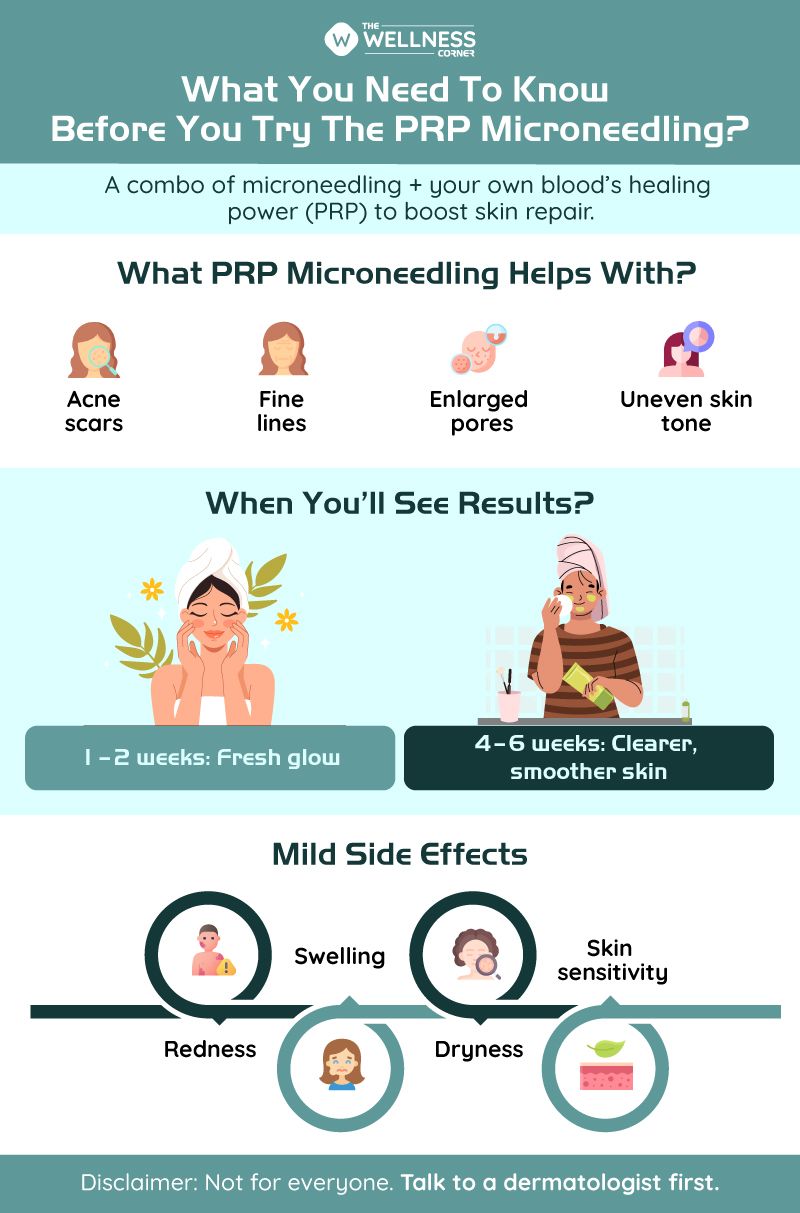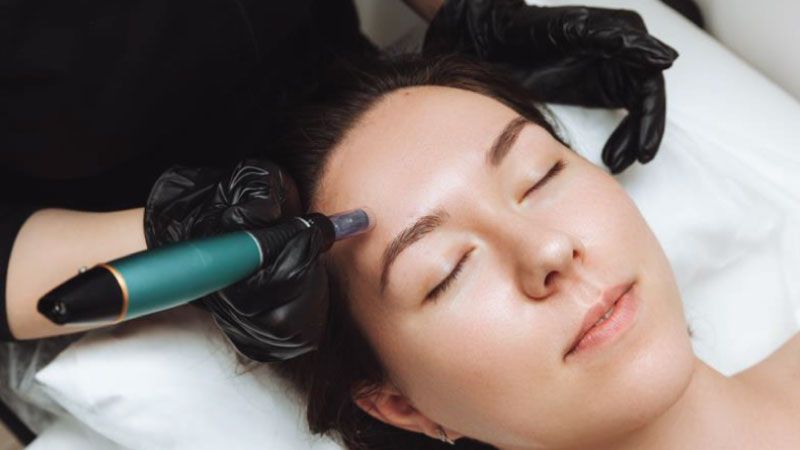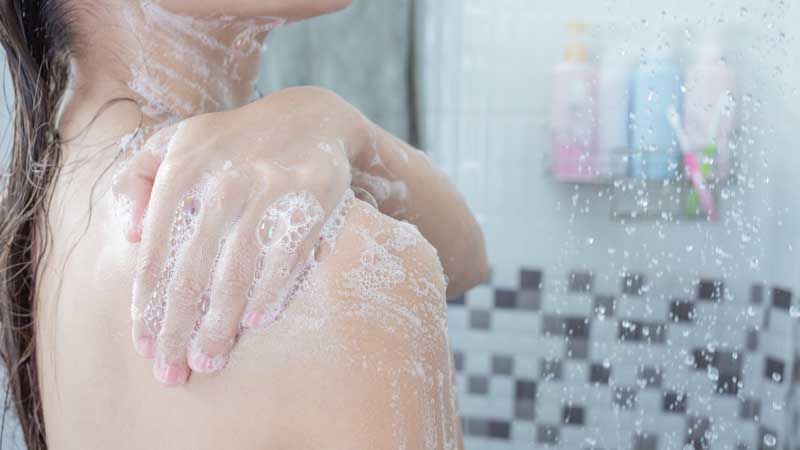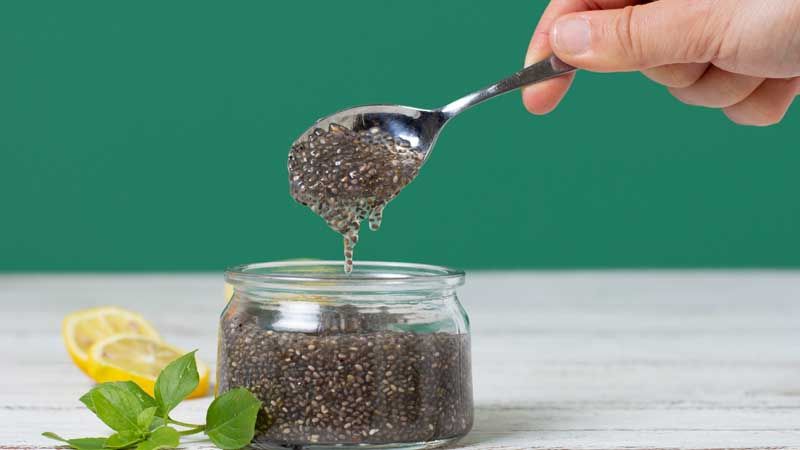Everyone’s Talking About PRP Microneedling… But Does It Actually Do Anything?
- 3 months ago
If you've scrolled through Instagram or listened to your favorite beauty podcast lately, you've probably heard the buzz around PRP (Platelet-Rich Plasma) microneedling — also nicknamed the “Vampire Facial.” This skin rejuvenation technique blends two powerful procedures: microneedling, which creates micro-injuries to stimulate collagen, and PRP, a concentration of your own blood’s platelets to supercharge healing.
But before you book your appointment, let’s break down whether this trending treatment delivers what it promises.
Is PRP Microneedling Worth It?
Here’s the short answer: Yes, if you're looking for natural, gradual skin rejuvenation without harsh chemicals or lasers.
While it’s not a quick-fix miracle, it’s one of the most effective, non-invasive skin treatments to improve texture, firmness, and tone —using your body’s healing powers.
Also Check: Facial Treatments For Every Skin Type

What Happens During the Procedure?
Here’s a step-by-step breakdown of what you can expect during a typical session:
- Initial Consultation: Your skincare provider will assess your skin concerns, goals, and medical history.
- Blood Draw: A small amount of your blood (about 2–4 tablespoons) is drawn from your arm.
- PRP Preparation: The blood is spun in a centrifuge to isolate the platelet-rich plasma.
- Microneedling Begins: After numbing cream is applied to your face, a microneedling device is used to create microchannels in the skin.
- PRP Application: The PRP serum is applied to the skin—either topically or injected—allowing the growth factors to penetrate deep into the dermis.
Total time: 45–75 minutes, depending on treatment area.
How Long Will It Take to See Results?
You might notice a subtle glow or tighter skin within 1–2 weeks after the first session. However, more significant changes—such as improved acne scars, refined pores, and reduced fine lines—typically become noticeable after 3–4 weeks, as collagen remodeling kicks in.
For Best Results:
- Complete 3 to 6 sessions spaced 4 to 6 weeks apart
- Follow with a proper skincare routine and sun protection
- Maintain with 1–2 touch-up sessions per year
Full results can develop over 3–6 months as new collagen builds.
Also Read: The Growing Trend Of Chemical Peels For Skin And Whether They Are Safe?
The Science Behind the Buzz
- Microneedling, also called collagen induction therapy, uses ultra-fine needles to create tiny punctures in the skin.
- These controlled injuries kick start your skin’s natural healing process— encouraging collagen and elastin production.
- When combined with PRP, which is packed with growth factors, the skin receives a nutrient-rich boost that enhances repair and regeneration.
According to dermatological studies, the combination can improve:
- Fine lines & wrinkles
- Acne scars
- Hyperpigmentation
- Skin texture and tone
Is It Safe?
When performed by trained medical professionals, PRP microneedling is considered safe for most skin types. Because PRP comes from your own blood, the risk of allergic reaction is minimal.
That said, it’s not for everyone. Those with certain blood disorders, active infections, or skin diseases should consult a dermatologist before treatment.
Real Results: What to Expect
Most patients begin to notice visible improvements within 2–3 weeks after the first session, with further improvements continuing over the next few months. Dermatologists typically recommend 3–4 sessions spaced 4–6 weeks apart for best results.
Benefits Backed by Research:
- Improved collagendensity
- Reduction in acne scarring
- Better skin elasticity and hydration
- Minimized pore size and fine lines
Potential Side Effects and Complications
While PRP microneedling is generally considered safe and low-risk, it’s not completely side-effect-free.
Common, temporary side effects:
- Redness and swelling (1–3 days)
- Mild peeling or dryness
- Slight bruising at injection sites
- Skin sensitivity (like a sunburn feeling)
Less common complications:
- Infection (if performed in non-sterile conditions)
- Post-inflammatory hyperpigmentation (especially in darker skin tones)
- Allergic reaction (rare, but possible if topical numbing agents cause irritation)
Pro Tip: Choose a certified provider using FDA-cleared microneedling devices and practicing strict hygiene.
Proven Benefits
|
Skin Concern |
PRP + Microneedling Efficacy |
|
Acne & surgical scars |
50–70% improvement after 4–6 sessions |
|
Fine lines & wrinkles |
Noticeable smoothing & plumping |
|
Skin Concern |
PRP + Microneedling Efficacy |
|
Hyperpigmentation |
Even skin tone, reduced dark spots |
|
Skin tone & texture |
Firmer, glowing, fresh-looking skin |
Final Thoughts
PRP with microneedling is a well-researched, dermatologist-approved way to renew your skin naturally. Whether you’re looking to treat acne scars, fine lines, or just refresh your glow, it’s worth considering — especially when guided by experienced professionals.
If you're seeking a non-surgical, long-term solution for aging or scarred skin, this treatment could be a game-changer.
FAQs
What is PRP with microneedling used for?
PRP with microneedling is commonly used to treat acne scars, fine lines, wrinkles, uneven skin tone, enlarged pores, and dull skin. The growth factors in PRP enhance collagen production and accelerate healing for smoother, firmer skin.
Is PRP microneedling better than regular microneedling?
Yes. While traditional microneedling stimulates collagen, adding PRP boosts healing, reduces downtime, and often leads to faster and more noticeable results—especially for scars and texture issues.
How long does it take to see results from PRP microneedling?
Initial glow may appear within 7–10 days, but optimal results—like smoother skin and reduced scars—develop over 4–6 weeks. Collagen remodeling continues for up to 3 months after each session.
How many PRP microneedling sessions do I need?
Most people need 3–6 sessions, spaced 4–6 weeks apart, for the best results. Maintenance treatments are typically performed every 6–12 months.
Is PRP microneedling safe for all skin types?
It’s generally safe for most skin tones. However, darker skin types may have a higher risk of post-inflammatory hyperpigmentation. Always consult a qualified provider before starting.
Does PRP microneedling hurt?
A topical numbing cream is applied before the procedure, so discomfort is minimal. Most patients describe it as a mild tingling or scratching sensation.
Are there any risks or side effects?
Mild redness, swelling, or pinpoint bleeding is normal. Rare risks include infection, bruising, or pigmentation changes—especially if not done in a sterile setting.
Disclaimer:
PRP microneedling is a medical-grade cosmetic procedure and may not be suitable for everyone. Individual results can vary based on skin type, underlying health conditions, and other factors. This blog is intended for informational purposes only and should not be considered medical advice. Always consult a certified dermatologist or qualified healthcare professional before starting any skin treatment.










